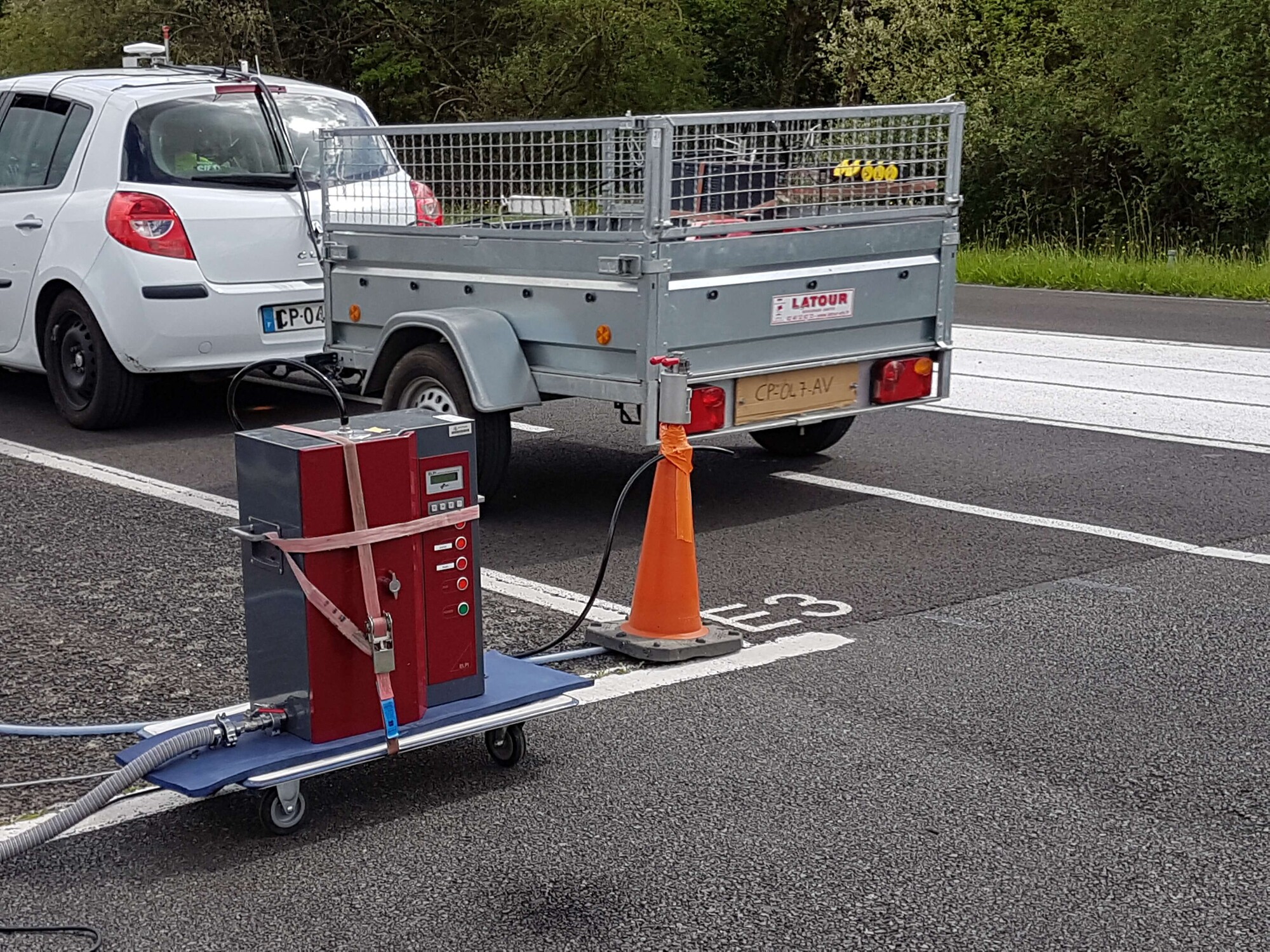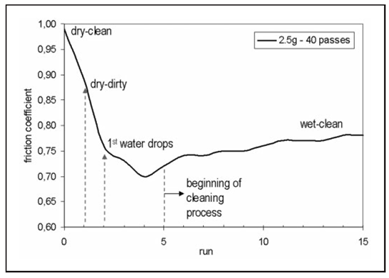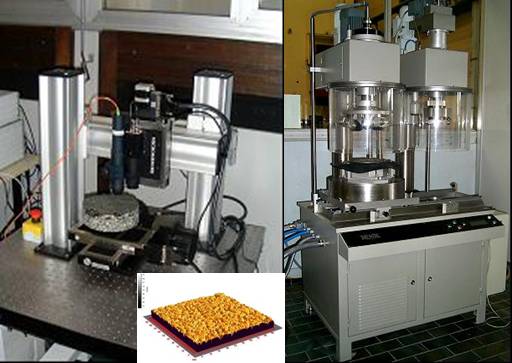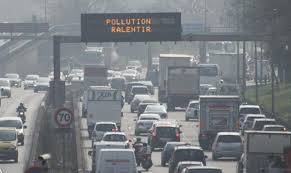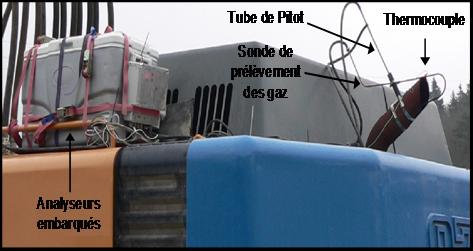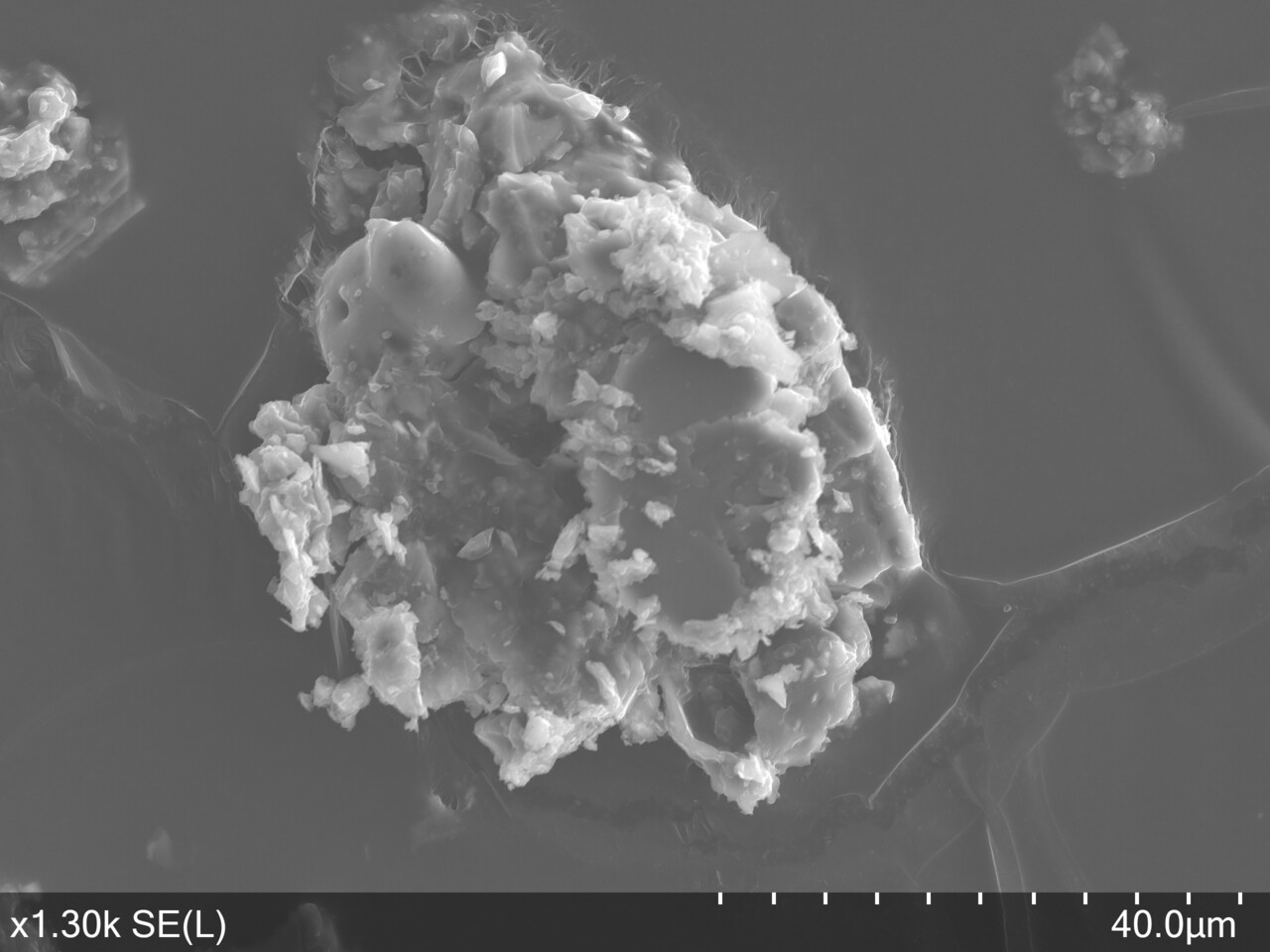Impact of pollutants / contaminants
Skid resistance of contaminated surfaces
Research on skid resistance aims at understanding and modeling phenomena related to contact (friction, wear, lubrication) on the basis of experiments and models in view of improving users’ safety. They address in particular the issue of contaminated road / tire contact with an extension to other transport modes like air transport (aircraft tire / runways contact) and guided urban transport (rubber-tired metro / rolling track contact). The term “contamination” covers all elements disrupting the direct contact between the tire and the rolling surface. As such, it includes water, snow, ice and particles (dust, debris of tires and road, etc.) that are deposited on the surface.
Research on contaminated surfaces should therefore allow linking the characteristics of deposits (nature, size/thickness, etc.) to friction forces. The third body approach, inspired from tribology, is used to better understand how contaminants lubricate the tire/rolling surface interface. Multi-scale analysis of the rolling surface’s texture helps, on the other hand, to assess the role of texture scales in the evacuation of contaminants and the generation of friction forces.
Environmental dynamics of vehicular emissions
It now widely acknowledged that vehicular traffic generates direct and indirect emissions of pollutants (including but not limited to CO, PAH, rare earths, black carbon, heavy metals and fine particles) into the environment. These, in turn, may result in peaked pollution events. There, however, currently is a lack of information about near field transformations undergone by these pollutants as well as about their ultimate fate and sanitary implications. Based on the previous and due to the multiplicity of emitted compounds and types of dissemination vectors, there is a need for a careful evaluation of their effects on near-road ecosystems.
Researches will focus on the environmental and sanitary implications of vehicular emissions by taking into account their local biogeochemical cycle and sensitivity of the receiving environment / exposed populations. It is aimed at emerging emissions source (e.g. non-exhaust emissions) and pollutant categories (organics, organometals. etc.). Pollutant cycling will be carried out at different environmental scales ranging from particular interfaces to entire ecosystems. In this regard, efforts will be made in order to adapt and spatialize the Quantitative Assessment of Health Risks (QAHR) methodology to road transport networks. The QAHR approach proposes a framework for evaluating the environmental and sanitary risks by basing on the type and sensitivity of the receiving environment as well as on the long term (eco)toxicity of pollutant inputs.
Finally, the gained results will benefit to ongoing researches about the skid resistance of vehicles when braking on contaminated surfaces: i.e. in terms of road surface impregnation with vehicle-induced pollutants (metallic particles from braking systems, mineral particles from re-suspension, hydrocarbons from tire wear, exhausts gases and/or oil spills, etc). The role played by these contaminants may be central when microscopically assessing, at the tire / pavement interface, the progressive degradation of skid resistance.


